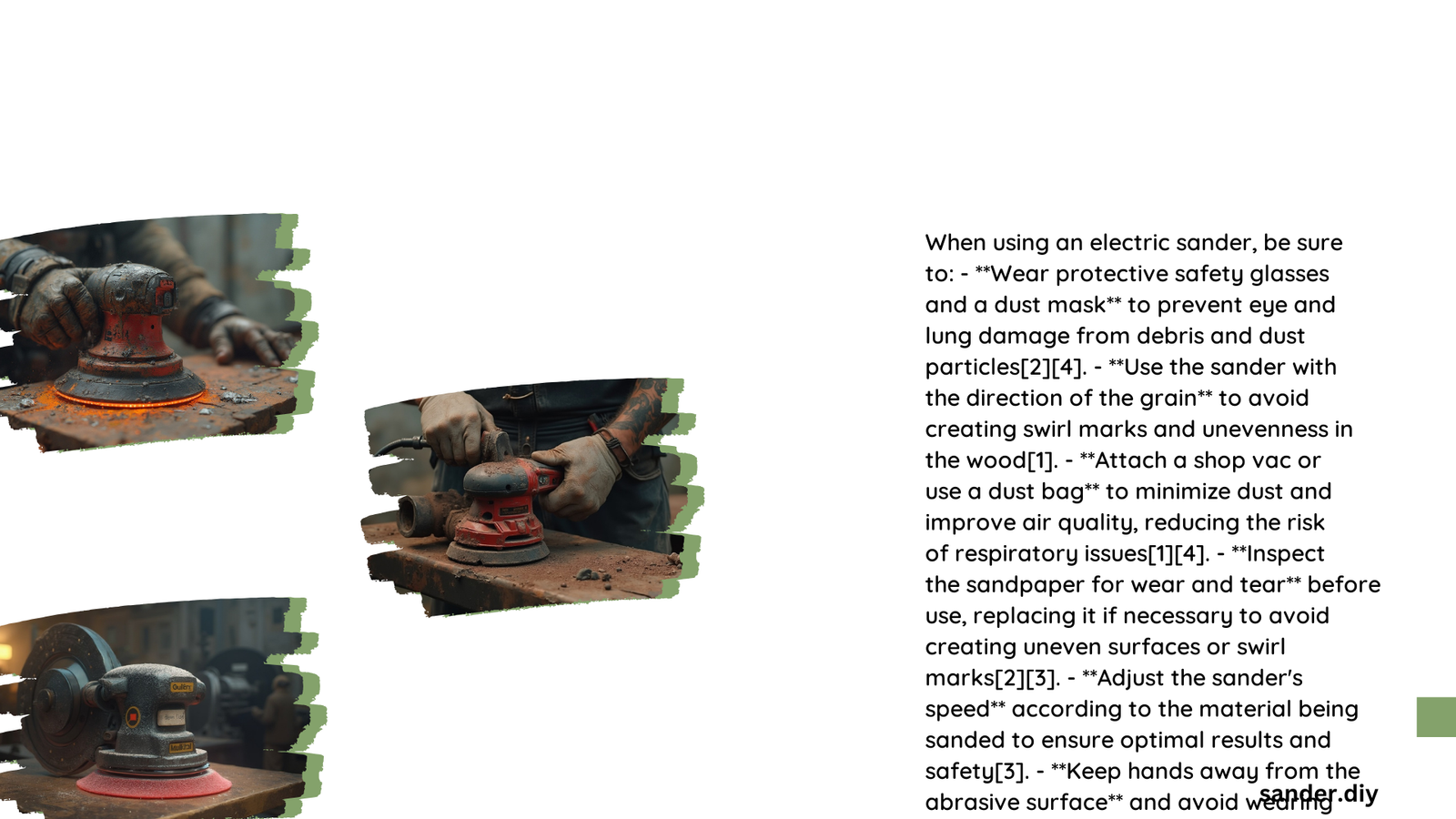Electric sanders are powerful woodworking tools that demand careful handling and precise technique. When using an electric sander, operators must prioritize personal safety, understand proper operational techniques, and maintain equipment integrity to prevent accidents, ensure optimal performance, and achieve superior finishing results. This comprehensive guide will walk you through essential considerations for safe and effective electric sander usage.
What Safety Gear Should You Wear?
Personal Protective Equipment Checklist
| Protection Type | Recommended Gear | Purpose |
|---|---|---|
| Eye Protection | Safety glasses/goggles | Prevent particle entry |
| Respiratory | Dust respirator | Block harmful dust particles |
| Hearing | Noise-canceling earmuffs | Reduce sound exposure |
| Hand | Vibration-absorbing gloves | Minimize hand fatigue |
Why Is Proper Clothing Important?
Selecting appropriate clothing is crucial when operating an electric sander. Consider these guidelines:
- Avoid loose-fitting shirts or jackets
- Remove jewelry and watches
- Tie back long hair
- Wear close-fitting, comfortable work attire
- Use sturdy, closed-toe work boots
How Can You Ensure Optimal Sander Performance?

Sandpaper Selection Strategies
Choosing the right sandpaper is fundamental to achieving desired results:
- Coarse Grits (40-80):
- Ideal for heavy material removal
- Excellent for initial surface preparation
-
Use sparingly to prevent excessive material loss
-
Medium Grits (100-150):
- Perfect for intermediate smoothing
- Balances material removal and surface refinement
-
Recommended for most general woodworking tasks
-
Fine Grits (180-220):
- Provides smooth, polished finish
- Prepares surface for painting or staining
- Minimizes visible scratches
What Maintenance Practices Extend Sander Lifespan?
Regular Inspection Routine
Implement a systematic maintenance approach:
- Weekly Checks:
- Inspect electrical cord for damage
- Clean dust collection system
-
Verify dust bag/filter functionality
-
Monthly Maintenance:
- Lubricate moving parts
- Check belt/pad alignment
- Replace worn components
How Do You Prevent Common Sanding Mistakes?
Technique and Pressure Management
Critical operational considerations:
- Maintain consistent, light pressure
- Move sander in direction of wood grain
- Avoid lingering in one spot
- Use progressive grit progression
- Keep sander flat against work surface
What Are Potential Hazards to Avoid?
Risk Mitigation Strategies
- Electrical Risks:
- Use ground fault circuit interrupter (GFCI)
- Inspect cord before each use
-
Avoid wet environments
-
Dust Hazards:
- Use dust extraction systems
- Work in well-ventilated areas
- Wear respiratory protection
Conclusion
Mastering electric sander usage requires a combination of safety awareness, technical skill, and consistent maintenance. By following these comprehensive guidelines, woodworkers can achieve superior results while minimizing personal risk.
